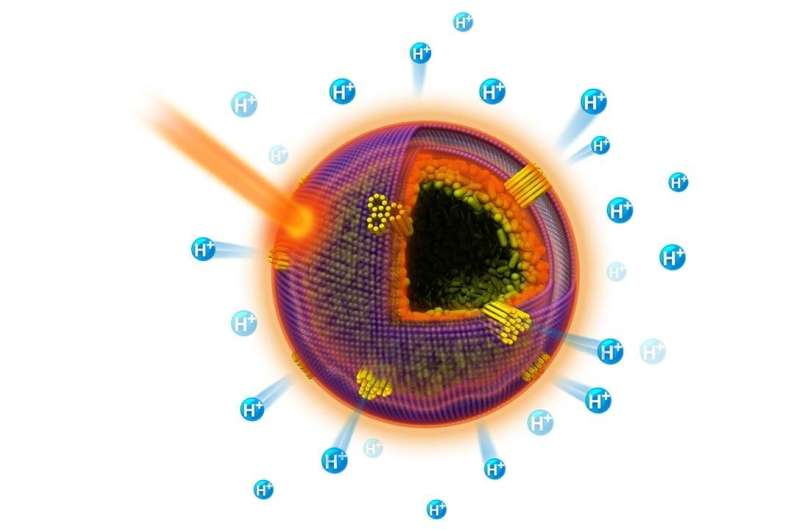Harvesting energy from light using bio-inspired artificial cells

Scientists designed and connected two different artificial cells to each other to produce molecules called ATP (adenosine triphosphate). ATP is the fundamental unit that all living things use to carry and provide energy to run processes in cells. The scientists developed one group of artificial cells that generates protons when it is exposed to light. They also developed different artificial cells that contain an enzyme that can use these protons to generate ATP. The team then connected the two types of cells together.
This artificial cell design uses tiny rods (nanorods) made of silver and gold to create a biological cell wall similar to those in nature. These rods are in contrast to the lipids (such as fats and fatty acids) that biological cells use to make cell walls. These nanorods respond to light in a way that speeds up how quickly certain proteins can produce protons.
Recent efforts to make artificial cells have membranes packed with nanoparticles and assembled into a colloidal capsule. The membrane substance itself offers advantages including tunable pores through which ions can pass. However, the membrane material also may influence inherent processes of interest within the artificial cells.
Published in Angewandte Chemie International Edition, the study, "Light-Gated Synthetic Protocells for Plasmon-Enhanced Chemiosmotic Gradient Generation and ATP Synthesis" was designed to develop an understanding of such effects. Researchers at the Center for Nanoscale Materials at Argonne National Laboratory, a Department of Energy Office of Science user facility, created light-responsive artificial cells using so-called plasmonic materials –nanosystems that can interact with light in unique ways—for the colloidal capsules.
In addition, a light-gated protein is used to drive a photo-activated synthesis process. The artificial cells have a colloid packed with silver-gold (Au-Ag) nanorods which self-assemble into capsules. Furthermore, the Au-Ag nanorods attain a plasmon resonance under certain light conditions. The light-activated protein bacteriorhodopsin was then attached onto the surface of the capsule.
Bacteriorhodopsin was chosen for its ability to transport protons across a membrane under illumination. The bacteriorhodopsin captures light energy, uses that energy to pump protons across the membrane, and converts the differences in proton concentrations into chemical energy.
The cell-like potential of this design was further demonstrated by leveraging the protons as "chemical signals" for triggering ATP biosynthesis in a coexistent artificial cell population. In total, the artificial cells perform consistently with design objectives. The broad plasmon resonance of the Au-Ag colloidal capsules enhanced the probability of photoreaction by the light-activated protein, thus creating a new light-controllable synthetic "protocell."
The synthetic protocell model offers opportunities for developing alternative solar-to-chemical energy conversion systems.
More information: Zhaowei Chen et al. Light‐Gated Synthetic Protocells for Plasmon‐Enhanced Chemiosmotic Gradient Generation and ATP Synthesis, Angewandte Chemie (2019). DOI: 10.1002/ange.201813963
Journal information: Angewandte Chemie International Edition , Angewandte Chemie
Provided by US Department of Energy




















